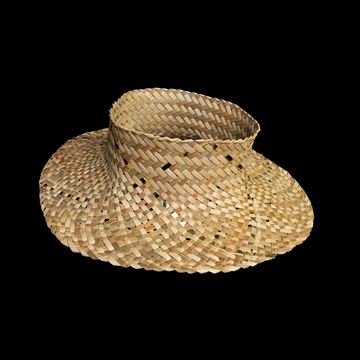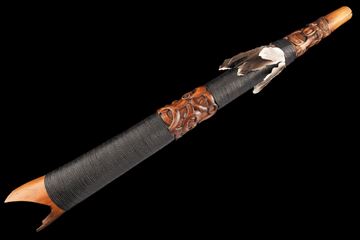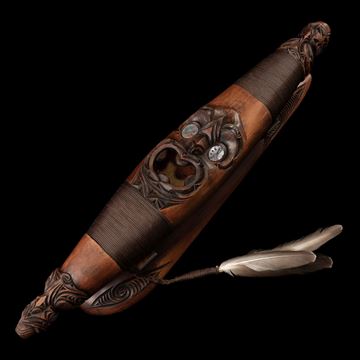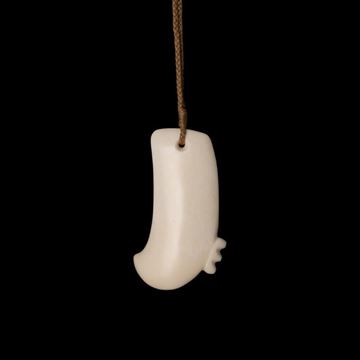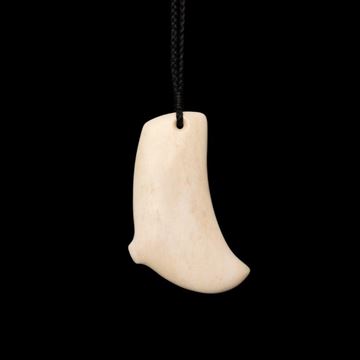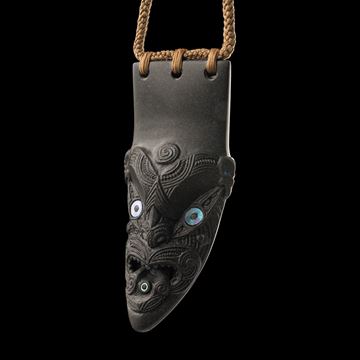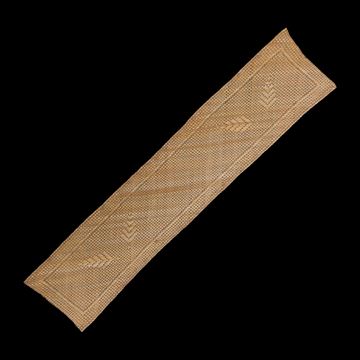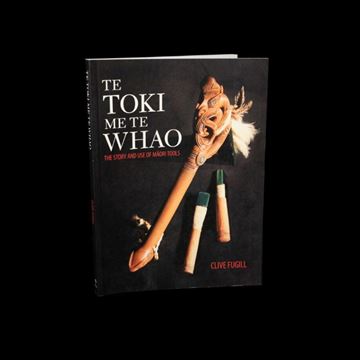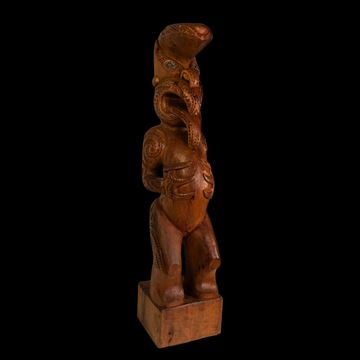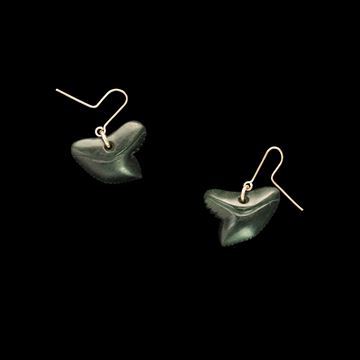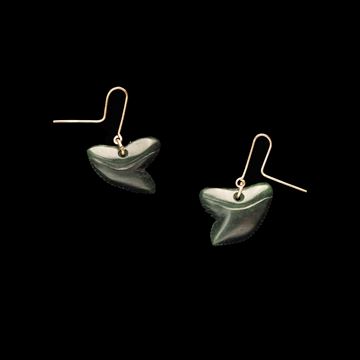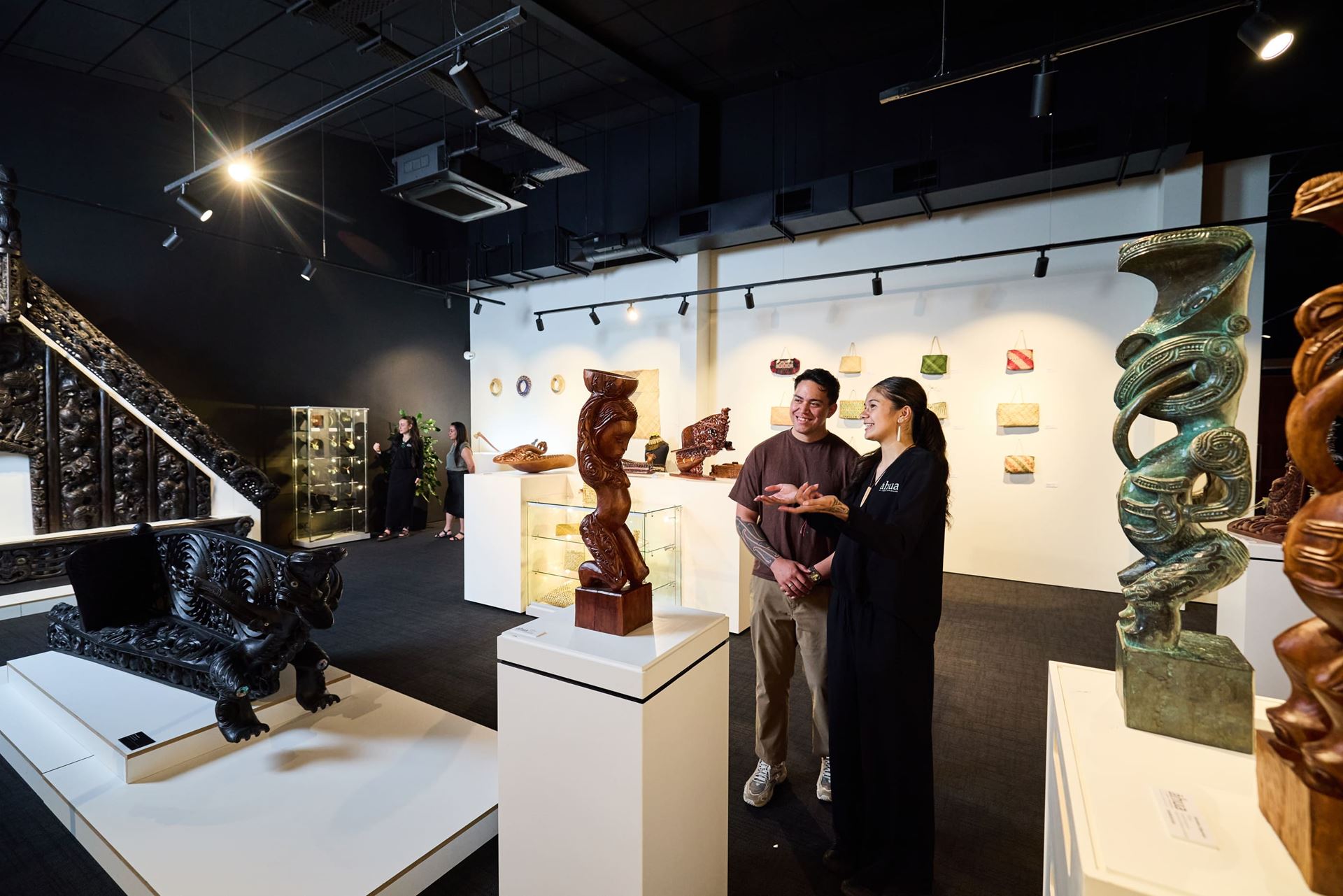
Āhua Gallery
Select Subcategory
Pōtae - 6779AY
This Pōtae is a contemporary hat woven with traditional Māori weaving methods.
Material: Harakeke & Metallic Foil
Circumference: 21 inches (53cm)
$390.00
Pūkaea - 4798TJ
The pūkaea was the largest of the Māori trumpets, ranging in size from one metre (3.2ft) to over two meters (3.4ft) in length. They were made in two pieces and bound together with the roots of the kiekie (climber). Many pūkaea were carved and they often belonged to the chief of a tribe. They were typically used to call the tribe together.
Material: Matai
Measurements: 600mm x 70mm x 60mm
$5,900.00
Pūtōrino (on Stand) - 4799KA
In Māori whakapapa (genealogy), all Māori flutes come to us from Hine Raukatauri, the daughter of Tānemahuta, the atua (spiritual entity) of the forest and birds. Hine Raukatauri is best known as the atua of flute music. She loved her flute so much that she chose to live inside it. She is now personified as the case moth that hangs from branches of trees in a long slender cocoon. This case moth cocoon is where the pūtōrino gets its shape from.
Material: Mataī (NZ Native)
Measurements: 400mm x 70mm x 50mm
$7,990.00
Rei Niho - 3789IA
The mark of a high Chief was one who wore the hei niho (whale tooth pendant), as the teeth of the sperm whale were highly prized because of their rarity. Usually these pendants had simply etched out eyes to form a head at one end. With actual whale teeth being such a rarity, it became common to fashion the tooth form from other materials.
Material: Koiwi (Beef Bone)
Measurements: 67mm x 40mm
$250.00
Rei Niho - 5266IA
The mark of a high Chief was one who wore the hei niho (whale tooth pendant), as the teeth of the sperm whale were highly prized because of their rarity. Usually these pendants had simply etched out eyes to form a head at one end. With actual whale teeth being such a rarity, it became common to fashion the tooth form from other materials.
Material: Koiwi (Beef Bone)
Measurements: 60mm x 33mm x 4mm
$220.00
Rei Puta - 3885HW
The mark of a high Chief was one who wore the Rei Puta (whale tooth pendant), as the teeth of the Sperm Whale were highly prized because of their rarity. With actual whale teeth being such a rarity, it became common to fashion the tooth form from other materials.
Material: Onewa (NZ Greywacke)
Measurements: 135mm x 63mm x 30mm
$1,850.00
Takapapa - 5129HM
In former times, marae had no wharekai (dining halls) to what we are familiar with today. During those times, specific ‘food mats’ were laid out in the middle of the wharenui (meeting house) and the food for the manuhiri (guest) was placed on them. This takapapa has been weaved to be used as a table runner.
Material: Harakeke
Measurements: 1110mm x 230mm
$750.00
Tāniko Belt - 2726TE
Tāniko weaving produces a relatively stiff and unyielding fabric, it was traditionally used as a decorative border on fine cloaks of the kaitaka and paepaeroa types. Often several different strips of tāniko appeared on up to three sides of a cloak.
Material: Acrylic Cotton, Leather Lining, Macrame Silks
Measurements: 1150mm x 40mm
$990.00
Tekoteko - 4813HG
The tekoteko is a stylised representation of the main progenitor of a tribe and is the most focal point of the whare whakairo (carved tribal meeting house). They can be found – on traditional meeting houses – either at the highest point at the front apex of the roof or at the front central post. They can also be found at the base of the poutokomanawa (the main central ridge support post) of the house.
Material: Tōtara
Measurements: 865mm x 210mm x 180mm
$4,200.00
Tiger Shark Earrings - 4543IA
Shark teeth were highly sought after to wear as a symbol of prestige for personal adornment. They were reflective of the mana of the shark itself.
Material: Pounamu (Kawakawa)
Measurements: 12mm x 25mm x 6mm
$390.00
Tiger Shark Earrings - 4544IA
Shark teeth were highly sought after to wear as a symbol of prestige for personal adornment. They were reflective of the mana of the shark itself.
Material: Pounamu (Kawakawa)
Measurements: 12mm x 25mm x 6mm
$390.00

